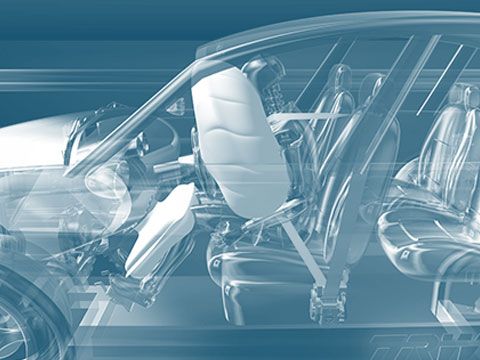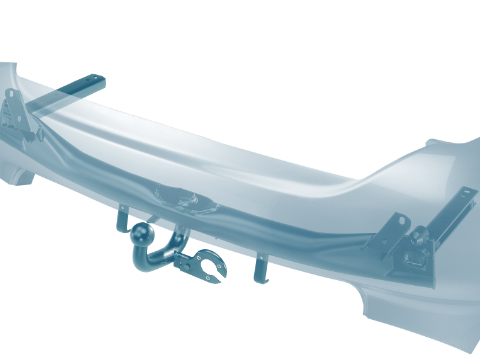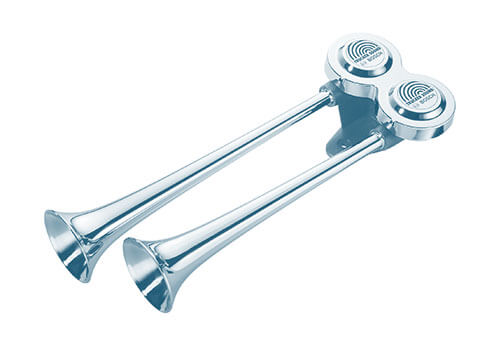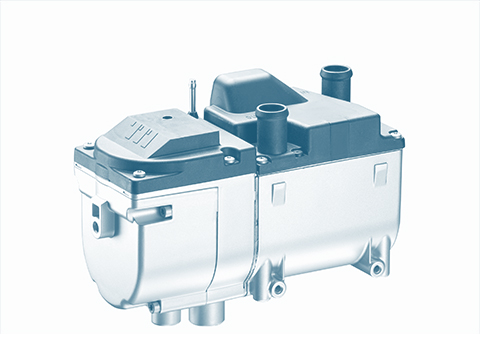Bike racks
So-called bike racks are ideal for transporting bicycles on or in vehicles.
Function
The following different types of bike rack are available:
- Rear-mounted
- Roof-mounted
- Hitch-mounted
Hitch-mounted bike rack systems
Whether or not a trailer hitch is suitable for mounting a bike rack can be seen from the fitting instructions for the hitch and  depends on the permissible towing capacity of the vehicle and the hitch. These rack systems are installed on the ball mount of the trailer hitch. Quick attachment of the rack is thus no problem, whatever the vehicle make or brand. The bicycles are then simply strapped to the racks.
depends on the permissible towing capacity of the vehicle and the hitch. These rack systems are installed on the ball mount of the trailer hitch. Quick attachment of the rack is thus no problem, whatever the vehicle make or brand. The bicycles are then simply strapped to the racks.
Safety
With a view to ensuring maximum safety, the rack should have been developed and approved in close cooperation with the automotive industry and independent test agencies.
 It is important to establish the towing capacity of the trailer hitch as well as the minimum towing capacity and the D-value required for fitting the bike rack. To determine the maximum permissible weight of the bicycles, the weight of the rack itself has to be subtracted from the towing capacity of the trailer hitch. The result obtained is then the maximum load which can be carried by the bike rack.
Calculation example:
If the hitch has a towing capacity of 75 kg and the bike rack weighs 20 kg, it is allowed to carry a maximum load of 55 kg. If the rack is too heavily laden, safe transportation is no longer guaranteed.
When a bike rack is attached to a vehicle, it may conceal the number plate. An improvised number plate is not permissible as a temporary solution: Where and how a number plate is to be fitted is clearly regulated by law. The German vehicle licensing regulations state the following: "If the rear number plate is partially or completely concealed by a load carrier or by a load being carried, a duplicate number plate must be attached to the vehicle or load carrier."
In concrete terms this means: A duplicate number plate must satisfy the same requirements as the concealed original number plate at the rear of the vehicle. In other words it must conform to the DIN standard and bear the appropriate test mark and corresponding registration number. The stipulated form is black lettering on a white background with a black border. The number plate must also be reflective and illuminated. The only thing not required for a duplicate number plate is an official stamp. A fine may be imposed as a penalty for infringement of the legal requirements.
Grease and dirt must be removed from the ball mount of the trailer hitch before using a bike rack to stop the rack sliding about or even slipping off the ball mount altogether. Before driving off, any parts which could drop off the bicycles during transportation (e.g. pumps, baskets, batteries etc.) should be removed. To ensure safe driving it is also advisable to avoid exceeding the recommended speed limit of 130 km/h.
It is important to establish the towing capacity of the trailer hitch as well as the minimum towing capacity and the D-value required for fitting the bike rack. To determine the maximum permissible weight of the bicycles, the weight of the rack itself has to be subtracted from the towing capacity of the trailer hitch. The result obtained is then the maximum load which can be carried by the bike rack.
Calculation example:
If the hitch has a towing capacity of 75 kg and the bike rack weighs 20 kg, it is allowed to carry a maximum load of 55 kg. If the rack is too heavily laden, safe transportation is no longer guaranteed.
When a bike rack is attached to a vehicle, it may conceal the number plate. An improvised number plate is not permissible as a temporary solution: Where and how a number plate is to be fitted is clearly regulated by law. The German vehicle licensing regulations state the following: "If the rear number plate is partially or completely concealed by a load carrier or by a load being carried, a duplicate number plate must be attached to the vehicle or load carrier."
In concrete terms this means: A duplicate number plate must satisfy the same requirements as the concealed original number plate at the rear of the vehicle. In other words it must conform to the DIN standard and bear the appropriate test mark and corresponding registration number. The stipulated form is black lettering on a white background with a black border. The number plate must also be reflective and illuminated. The only thing not required for a duplicate number plate is an official stamp. A fine may be imposed as a penalty for infringement of the legal requirements.
Grease and dirt must be removed from the ball mount of the trailer hitch before using a bike rack to stop the rack sliding about or even slipping off the ball mount altogether. Before driving off, any parts which could drop off the bicycles during transportation (e.g. pumps, baskets, batteries etc.) should be removed. To ensure safe driving it is also advisable to avoid exceeding the recommended speed limit of 130 km/h.
Value retention
To ensure the longest possible service life it is important to heed all the specifications of the rack manufacturer. When not in use, the rack should be stowed away to avoid unnecessary ballast and the risk of accidents.
Protection of the environment
The use of a hitch-mounted bike rack results in approximately 7% higher fuel consumption, as compared to roughly 15% when using a roof-mounted version. On a hitch-mounted rack, the bicycles are in the slipstream of the vehicle and thus produce less resistance.









